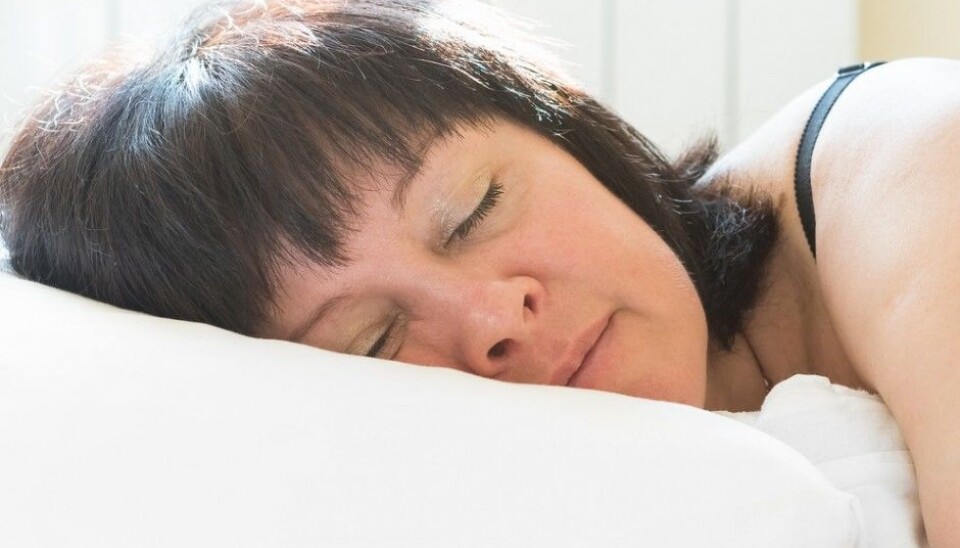
These are our sleep habits
Norwegian researchers have asked compatriots about their sleep habits. Here are seven findings from their study. Are you in the same groove?
Do you believe that reading habits, a comfortable mattress and an open window or dark curtains impact your sleep? You are not alone.
Most people think their bedroom habits have an effect on how they sleep, and doctors concur. But scientists have not really known if this is true. Research on sleep tends to be about pharmacological interventions rather than ordinary, non-medicinal, bedroom habits.
It is intriguing for sleep researchers to collect information about these factors which really impact sleep, write Siri Waage and her colleagues in an article in the journal “Sleep Medicine”. Waage is a central coordinator at the Norwegian Competence Centre for Sleep Disorders and a post doc at the University of Bergen.
The Norwegian researchers have looked into what the general public in Norway claims to be their sleep habits. Here are seven of their findings:
1. You read a glowing screen

Apparently, 27 percent of Norwegians use electronic media nightly after retiring to bed. The younger ones in particular: 63 percent of those under the age of 30 use electronic media every evening after going to bed.
“The high numbers using electronic media in bed is perhaps the major discovery in the study,” says Siri Waage.
“The findings are perturbing. Light from electronic media can impact our sleep rhythm. Added to that, activities on electronic media, such as computer games and TV programmes, are stimulating and make it harder to sleep. A good piece of advice for sleep hygiene is to avoid such use,” stresses Waage.
2. … or print
Even more read books, magazines or newspapers in bed. The oldest Norwegians, and women, read the most. Even in the younger age group there are 15 percent who read paper media every night. The researchers have not asked whether they read to help fall asleep or just for the pleasure of it.
3. You change the bedlinen often
Six in ten change their bedding every fortnight at least. Women change the bedlinen most often. When asked, men don’t have the foggiest notion regarding when the sheets and duvet covers were changed last. Well, truthfully just one in 30 men doesn’t know, but nearly all women keep track of this laundry work.
4. You want a comfortable pillow
Mattresses, duvets and pillows need to be preferably comfortable – and pillows are deemed the most important for sound sleep, followed closely by mattresses. Older people, and women, are the most concerned about having comfortable beds. They are also the most satisfied with what they sleep on nightly.
The researchers say it looks as if the elderly and women have more focus on the sleep environment and are more willing to invest in quality beds. However, it is also they who report the most trouble with poor sleep. Most people, however, do not view pillows, mattresses and duvets as the major factor for getting a good night’s sleep.
5. You want the room to be cold
Siri Waage and her colleagues refer to research recommending a bedroom temperature of 18° C. One in three in Norway likes to have it colder than 12° C in their bedrooms. Older persons in particular tend to like it chilly. Half of everyone asked over 60 years old sleeps with an open window every night and keep their bedrooms below 12° C in winter.
“A surprising find,” says Siri Waage. “The fact that so many prefer a much cooler temperature might be interpreted that [the recommended] temperature isn’t as important for sleep as we thought.”
6. You want it dark
Nearly one in three use thick curtains or blinds to block light when sleeping. The youngest crowd is most concerned about getting it dark. Too much light makes it hard to sleep. The researchers found it odd that the oldest age group, who sleep worst, are less likely to use curtains or blinds that give them a solid blackout.
7. You sleep on your side
In the old days people slept in a crouched, sitting position on short beds. Today we almost universally have the luxury of beds that are longer than we are and we have a preferred sleeping position – even though our positions can actually have an effect on our dreams.
Two out of three like to sleep on their sides. The majority of these Norwegians also have a preference regarding which side. Women prefer to sleep on their right side, whereas men are pretty much 50-50 in that department. Some 15 percent like to sleep on their backs and a little more sleep lying on their stomachs.
“That is a positive finding. Sleeping on your back is worse for snoring and sleep apnoea,” write the researchers.
---------------------------------
Read the Norwegian version of this article at forskning.no
Translated by: Glenn Ostling
































